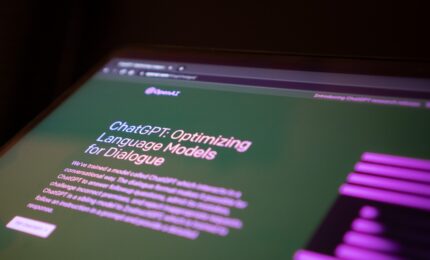A strong content plan doesn’t just come from hunches and assumptions. While you know your industry and target audience well, nothing guides you better than the data. When building your content plan, it’s critical that you use the data to get intentional about which content you create, where you promote it, and most importantly, why you’re doing all of it.
A few signs that you need some guidance from the data, include:
- Low and slow-growing organic traffic
- Minimal engagement on social media
- Lack of subscriber engagement and email clicks
- Low content conversions, I.E. downloads or leads earned
Luckily, the data you need to turn those issues around is readily available. You’ll find metrics to guide your content plan within Google Analytics, from your customer care team, among social media insights, and more.
Bring data to the forefront of your content strategy by leveraging these resources and processes.
Set Quantifiable Goals for Content in Each Funnel Stage
The first step in creating a data-based content plan is setting clear goals around each of these stages. This not only ensures that you prioritize each stage, but that you have a clear focus for each one. Instead of just creating content to create it, you can actually drive ROI from your efforts.
An effective content plan focuses on all content within the funnel—not just blog posts or social media posts. When you target the entire funnel, you can be sure you’re attracting potential customers and clients from every angle. If you’re unfamiliar with the stages of the funnel, here’s a quick overview:
- Top of Funnel (TOFU): This is the awareness stage and includes blog posts, social media content, podcasts and videos.
- Middle of Funnel (MOFU): This is the evaluation stage and includes educational webinars, workshops, and downloadable resources.
- Bottom of Funnel (BOFU): This is the conversion stage and includes case studies, customer stories, spec sheets and product- or service-focused webinars.
For example, funnel goals for your next quarter might look like this:
- TOFU: Grow Instagram to 800 followers, create two YouTube new videos, and publish four articles.
- MOFU: Develop one new downloadable resource and earn 100 new subscribers.
- BOFU: Host one webinar that drives 10 exploratory calls with potential clients.
You then build your content plan around these goals. Who needs to do what? What resources will you need from other departments? What is due when?
Don’t Ignore Keyword Research
One of the most important aspects of a data-based content plan is keyword research. Properly optimizing your on-site content, like landing pages and blog posts, is critical to making the most of it. If your content gets lost in search because it’s not optimized, how will people find it?
While you can share via newsletters and social media, focusing on SEO is the long-term game. So if Facebook blows up tomorrow, you’re still attracting potential clients and customers to your site through organic search.
Optimizing your content properly starts with keyword research. Here are some keyword research tips:
- Focus on search terms that have high search volume and low competition.
- Choose keywords that are relevant to your brand and content.
- Start with the research, and then write the content—it can be hard to make a keyword feel natural if you do it the other way around.
Do Audience Research
You know who your audience is, yes, but do you know what makes them tick? Do you know what kind of content they want to read, download or engage with? This is where audience research comes into play, and there are so many ways to do it. Here are some places to look for this audience data:
- Social: Get to know your followers with polls on Instagram stories. Do you want to read about THIS or THAT? Do you care about THIS or THAT? If you have an active and engaged audience, it will be easy to get data that can inform your conent plan. You can also use polls on LinkedIn, Twitter and Facebook (pages and groups).
- Email: Send a survey to your subscribers twice each year or once a quarter. What kind of content do they want to see more of? What are they struggling to do or understand right now?
- Analytics: Collect data from all your analytics platforms, including social media, CRM and email marketing. What is their age? Gender? Location? Common topics read, clicked on or asked about?
Do this audience research at least once each year to make sure you’re up-to-date on who you’re actually speaking to with your content.
Follow the Traffic Data in Google Analytics
If you’re not regularly reporting on website traffic via Google Analytics or your own CMS data dashboards, like what’s available in Hubspot, now is the time to start. This is some of the most valuable data for your content plan because it tells you what people are interested enough to click through to.
Plus, it pulls together most of the traffic data from all the content you create, making it a one-stop shop for ensuring your content plan is on-point. Here are a few key traffic metrics that are helpful to consider:
- Social traffic: Which platforms are driving the most traffic? More importantly, do you notice Twitter drives more traffic for one type of content than Instagram? This can help you understand how to develop content for each platform and which ones are actually driving traffic back to your site.
- Organic traffic: When looking at organic traffic, consider two key details. First, is your organic traffic increasing MOM? If so, your SEO-optimization is working. Second, which keywords are driving the most traffic. Google doesn’t share much of this information, but tools like Ahrefs and Ubersuggest do if you pay for a subscription.
- Top email traffic: Your email subscribers are easier to target than social media followers, so knowing what they want to hear about and what gets them to convert is key. Ask yourself: which blog posts or landing pages are getting the most traffic from email? This can help you hone in on the topics they care about most.
- Content with most overall traffic: Which content is continually most visited each month? What patterns do you notice in terms of style of content, length, or topic? Don’t forget to consider how you market these pieces of content—and whether you need to leverage those mediums more effectively to boost traffic.
Check-In With Customers
Qualitative data from customers is especially valuable in guiding BOFU content, like product guides, demo content, and even case studies. Your customers represent the exact person you want to attract, so knowing what they care about is critical for creating effective content.
Use interviews with customers and check-ins with your customer success team to build your content plan. Use this as an opportunity to get a deeper understanding of how your content can best serve current customers while also giving prospective customers what they need to convert.
For example, customers may continually say that they were unsure about a certain feature you offer before getting clarity from one of your salespeople. This is a content opportunity waiting to happen. Create a video, case study or blog post on this feature and then share it regularly and make it readily available.
Keep Reading: How to Provide Better Sales Support With Case Studies
Consider Industry and Competitor Trends
The data that comes directly from your organization and audience is powerful, but don’t overlook industry data. Many organizations release annual and even quarterly data about the state of your industry and customer and that information can be invaluable for developing a data-based content plan.
In particular, it can give you a sense of what others in your industry are doing and what your ideal audience, on a broader spectrum, is looking for. Use this data to answer questions like:
- What solutions or support can our content provide?
- What gaps can our brand fill?
- How should we shift our content strategy to best reflect industry changes?
- What issues is our target audience concerned with? How can we address those with our content?
Build A Data-Based Content Plan
Your intuition and personal knowledge are powerful—but the data will never steer you wrong. Blend all these data sources with your own experience to make sure that your content plan is doing what it’s supposed to: attracting people to your brand. With a strong and clear strategy, you’ll see greater ROI and reap the long-term benefits of content that resonates with the people who need it most.



